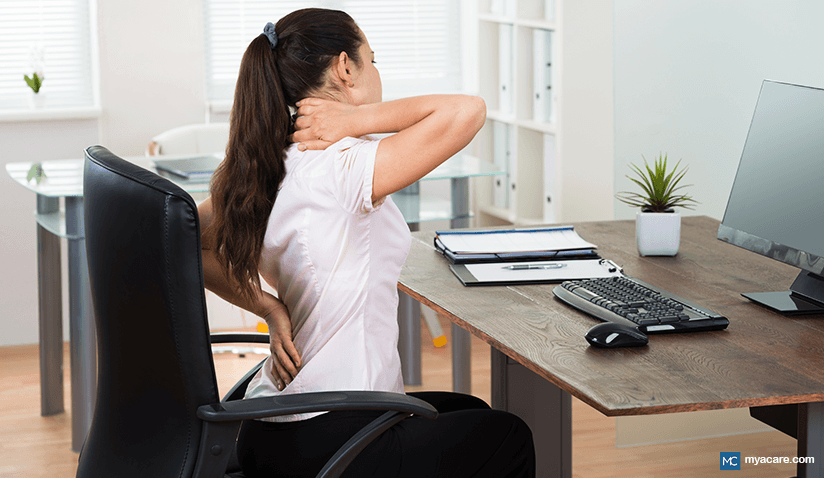Prolonged sitting is one of the leading causes of health hazards in the modern world. People who sit for long periods are at a higher risk of developing heart disease, obesity, and other chronic conditions. A study published in the journal PLOS One found that people who sit for more than six hours a day are three times as likely to develop metabolic syndrome, a cluster of conditions that increase your risk for heart disease, stroke, and type 2 diabetes.
what is sitting?
wellhealthorganic.com:health-hazards-of-prolonged-sitting, Prolonged sitting is defined as sitting continuously for an extended period, usually for more than six hours a day. Although it may seem harmless, prolonged sitting has been linked to several health problems, including obesity, high blood pressure, diabetes, and heart disease. This is because the human body was designed to be active and mobile rather than sedentary.
When you sit for long periods of time, your muscles become inactive and your metabolism slows down. This can lead to reduced calorie burn and increased fat storage in the body. Additionally, prolonged sitting also leads to poor posture which can cause chronic back pain over time.
To combat the negative effects of prolonged sitting, it’s important to take frequent breaks throughout the day. This could involve standing up every hour or so or taking a quick walk around the office. Incorporating regular exercise into your routine can also help counteract the negative effects of prolonged sitting on your health.
Health hazards of prolonged sitting: effects on brain, bones, and joints
Sitting for long hours can have a negative impact on the brain, bones, and joints. Prolonged sitting has been linked to decreased brain function and increased risk of dementia. This is because when we sit for prolonged periods, blood flow to the brain decreases, resulting in decreased oxygen supply to the brain. Reduced blood flow also limits the production of mood-enhancing neurotransmitters like dopamine and serotonin.
Sitting for extended periods can also lead to bone density loss as well as joint stiffness and pain. When we sit for too long, our muscles do not move or support our bodies correctly, leading to weaker bones and an increased risk of fractures over time. In addition, sitting puts pressure on our spine and joints which can cause stiffness and pain.
To mitigate these health hazards associated with prolonged sitting, it’s essential to take frequent breaks throughout the day by standing up or walking around regularly. Incorporating exercise into your daily routine can help improve both bone density and joint flexibility while enhancing blood flow to the brain which results in improved cognitive function.
Prolonged sitting and health risks
Prolonged sitting is undoubtedly one of the main health hazards that come with modern lifestyles. Sitting for long periods has been linked to several adverse health outcomes, including obesity, diabetes, and cardiovascular disease. Research has shown that people who sit for extended periods are more likely to develop chronic diseases than those who don’t.
One of the primary reasons why sitting for prolonged periods poses a threat to health is that it leads to a decrease in physical activity levels. When you sit for long hours at work or home, you’re not engaging your muscles as much, which can lead to weaker bones and muscles over time. Additionally, when you sit too much, your body becomes less efficient at regulating blood sugar levels due to decreased insulin sensitivity.
To combat the negative effects of prolonged sitting on your health, experts recommend taking regular breaks from sitting every 30 minutes or so. This could involve standing up and stretching or going for a quick walk around your office or home. Incorporating regular exercise into your daily routine can also help mitigate some of the risks associated with prolonged sitting by improving overall fitness levels and strengthening muscles and bones.
Health benefits of getting up and moving
Sitting for prolonged periods is harmful to your health. This sedentary lifestyle has been linked to various illnesses such as obesity, diabetes, high blood pressure, heart disease, and even some types of cancer. Getting up and moving regularly is one of the best ways to mitigate these risks.
Regular physical activity boosts metabolism, improves circulation, and strengthens muscles and bones while reducing inflammation in the body. This lowers the risk of chronic diseases while improving overall health and well-being. Moving around also helps clear your mind by increasing oxygen flow to the brain leading to increased productivity and better mental clarity.
Physical activity does not have to be strenuous or time-consuming; it can simply involve walking around the office or house every so often or taking a walk during lunch breaks. Simple activities such as stretching or yoga can also do wonders for improving flexibility, and balance and reducing stress levels. In conclusion, incorporating regular physical activity into your daily routine has far-reaching benefits beyond just physical health that are worth considering for a healthier you!

Ways to reduce the health risks of prolonged sitting
One way to reduce the health risks of prolonged sitting is by taking regular breaks. This means standing up from your chair and walking around for a few minutes every hour. You can also perform stretching exercises or simple movements that engage your muscles and improve circulation. Doing so can prevent blood clots, lower back pain, and other complications associated with inactivity.
Another effective strategy is to invest in ergonomic office furniture. A comfortable chair with adjustable height and lumbar support can help maintain good posture and reduce strain on the spine. Additionally, using a standing desk or treadmill desk can allow you to work while staying active, promoting better overall health.
Finally, incorporating physical activity into your daily routine outside of work hours is essential for reducing the negative effects of prolonged sitting. Engage in moderate-intensity exercises such as jogging, cycling, or swimming for at least 30 minutes a day to boost cardiovascular health, strengthen muscles, and increase mobility. By adopting these healthy habits, you can reduce the risk of developing chronic diseases associated with sedentary lifestyles while ensuring optimal physical well-being.
Alternatives to sitting: standing or moving around
Sitting for prolonged periods has been linked to numerous health hazards such as obesity, heart disease, and poor circulation. Standing or moving around offers a healthy alternative to sitting. A standing desk is a great option that allows you to work while standing up, reducing the amount of time spent sitting. It also helps improve posture, reduce back pain, and increase energy levels.
Another alternative to sitting is taking frequent breaks to move around. Going for a quick walk or doing some stretching exercises can help combat the negative effects of prolonged sitting. Taking the stairs instead of an elevator or parking your car farther away from your destination are other ways to incorporate more movement into your daily routine.
Incorporating standing and movement breaks into your day can be beneficial not only for physical health but also for mental well-being. It increases focus and productivity, reduces stress levels, and improves mood overall. By making small changes in our daily routines we can lead healthier lives and avoid the risks associated with prolonged sitting.
Summary and conclusions
In conclusion, prolonged sitting has become a serious health hazard in today’s world. It is associated with a number of chronic diseases such as obesity, cardiovascular disease, and diabetes. Sitting for long periods can also lead to poor posture, back pain, neck pain, and other musculoskeletal disorders.
To counteract the negative effects of prolonged sitting, it is important to incorporate movement breaks throughout the day. These can include stretching exercises or short walks around the office. Additionally, standing desks and adjustable workstations have been shown to be beneficial in reducing sedentary behavior.
Overall, it is crucial to recognize the dangers of prolonged sitting and take proactive steps toward promoting an active lifestyle both in and out of the workplace. Making small changes such as taking frequent movement breaks can make a big difference in improving one’s health and well-being.
FAQs..
What is the hazard caused by sitting for a long time and doing repetitive?
Prolonged sitting: reduces body movement making muscles more likely to pull, cramp, or strain when stretched suddenly, causes fatigue in the back and neck muscles by slowing the blood supply, and puts high tension on the spine, especially in the low back or neck, and.
What are the effects of prolonged sitting on posture?
Sitting for prolonged periods results in posture changes such as the flatness of the lumbar-lordotic curve [25] and chronic muscle deconditioning that decreases muscle activity [26]. This can cause muscular fatigue even at low loads when adopting a static posture for a long period [27].
